What are the Benefits of Small Scale Wind Power?
Small wind turbines have less generating capacity than the huge commercial turbines found on wind farms, but their reduced costs and added versatility allow wind power to be used in a wider set of applications. These small turbines are used primarily for distributed generation generating electricity for use on-site, rather than transmitting energy over the electric grid from central power plants or wind farms. Small turbines are a small-scale alternative to solar panels, providing clean renewable energy to rural homes, farms and businesses. This reduces reliance on large fossil-fuel power plants and lowers the burden on the electrical transmission grid.
Small wind turbines can have a generating capacity of anywhere from 0.3 to 100 kW, though the amount of power they actually generate depends on wind speed. A small turbine will typically need wind speeds of four meters per second (or nine miles per hour) at the height of the turbine. Because steady wind speed is important, small turbines must be placed away from buildings, trees, and other obstructions that may block the flow of wind. This makes them ideal for rural and suburban communities that do not have the space restrictions found in urban centers.
The United States is the global leader in small turbine manufacturing. Domestic manufacturers reported sales of $115 million in 2011, with 54 percent of that revenue coming from exports. The industry represents an estimated 1,600 full time jobs in the United States. In 2010, the U.S. small wind cumulative capacity was 179 MW, making the United States the world leader in installed capacity, as well. Despite the growing market and robust sales, the small wind industry relies on state and federal policies to drive investment in small wind and to provide certainty for turbine manufacturers.
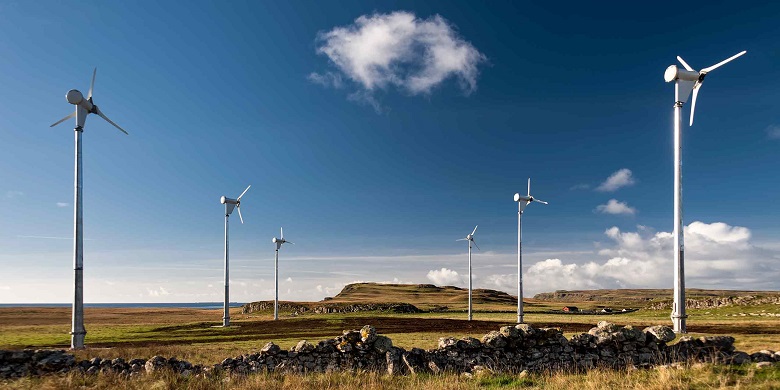
APPLICATIONS
Off-grid wind turbines are not connected to the electrical transmission grid. These are generally installed in areas far from the grid, and where connecting to the grid would be expensive. The simplest off-grid systems use direct current (DC) and provide power to devices in remote locations, such as telecommunications equipment and water pumps. These simple systems may use battery storage to provide backup power when the wind is not blowing. By adding an inverter to an off-grid system, the electricity can be converted to alternating current (AC), which allows the turbine to power AC appliances and makes the system compatible with the electric grid. There are a number of commercial and residential applications for off-grid wind. Commercial oil platforms commonly use small wind turbines, because they are a cheaper power source than fuel-burning thermal electric generators. Rural houses and farms located far from population centers can use off-grid wind in combination with solar panels, generators, and/or batteries to provide all of their power needs. The small wind market has seen a shift in recent years away from off-grid systems to more grid-connected systems.
Grid-connected small wind is now the most common type of small wind system. Many new turbine models have an inverter built in, so they are compatible with the AC electric grid upon installation. Grid-connected businesses and factories use small turbines for distributed generation to lower their carbon footprint and reduce their electricity bills. Homes and farms also use small wind for the same reasons, as small wind is often a cheaper option than solar panels. If a grid-connected small turbine has a large enough generating capacity, it may be possible to sell excess electricity back to the utility, in addition to the money saved on monthly electric bills.
Community wind projects are projects that are at least partially owned and developed by a local community. These projects can be either on- or off-grid, and can range in size from a single turbine to a utility-scale wind farm with hundreds of turbines. Projects have been carried out by municipal utility districts, rural electric cooperatives, Native American tribes, religious groups and entire rural communities around the United States. Locally owned wind projects offer a number of benefits, including more local control of power management, profits from electricity sales, and more local jobs. Community wind is a growing segment of the wind industry and accounts for over four percent of the cumulative wind capacity in the United States.
TECHNOLOGY
Small wind turbines operate on the same principles as large utility-scale turbines air moving past the turbine blades creates aerodynamic lift, causing the blades to rotate. A generator inside the turbine converts the mechanical energy of the rotating blades into electricity. However, small turbines operate lower to the ground and at lower wind speeds than utility-scale turbines.
The most common type of turbine is the horizontal axis wind turbine (HAWT). These turbines must be pointed into the wind to generate power. Simpler models do this with a weather vane behind the blades, but more complex models have wind sensors and a motor that will move the turbine to face the wind. Small HAWTs sit atop towers that range from 30 to 140 ft high, whereas utility-scale turbines may be 300 ft tall.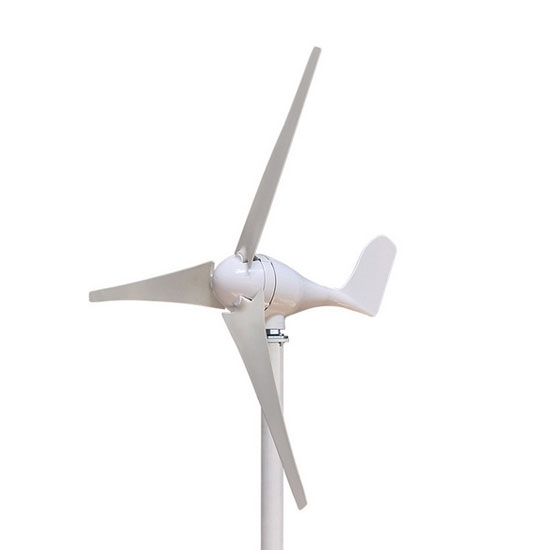
Recent advances have improved many of the features of small HAWTs. Newer models can generate more power with fewer rotations per minute (RPMs) of the blades, making them more efficient and reducing the noise produced by the turbines. Some have blades with a curved design that further reduces noise levels. New models also use rare earth magnets in their generators, allowing for smaller, lighter generators. Rotors are now equipped with brakes or pitched blades that protect the turbines against damage from high winds.
The vertical axis wind turbine (VAWT) is a radically different turbine design, in which the blades rotate around a vertical shaft. These turbines operate at lower wind speeds, and can be placed lower to the ground than HAWTs. Because of the shape of the blades, VAWTs can generate power from wind blowing in any direction even vertically.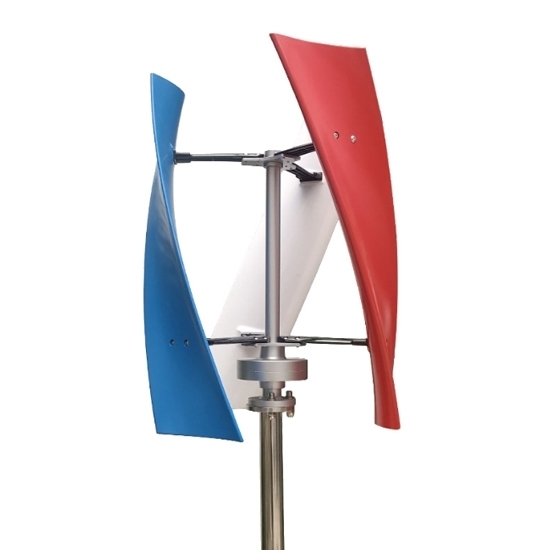
HAWTs are far more common due to their better efficiency and generation capabilities. However, VAWTs may be preferred in locations with less available space, or where wind speed and direction are inconsistent.
FINANCING & POLICIES
Small wind energy systems cost an average of $5,800 for every kilowatt of generating capacity in 2010, with the costs depending on fees and permits, installation costs, and local taxes. A 10 kW turbine, large enough to power most residences, may cost anywhere from $30,000 to $90,000. These systems can eventually pay for themselves through lower electric bills, though the amount of time that takes depends on initial costs and electricity prices. The payback period may be as short as six years or as long as 30 years. Federal and state incentives for small wind can significantly reduce initial costs and payback periods for small wind turbines.
The Federal Investment Tax Credit (ITC) is perhaps the most important federal incentive for small wind. The ITC is an upfront tax credit of 30 percent of total expenditures for wind turbines. The ITC was enacted in 2009 as part of the American Recovery and Reinvestment Act, and that year saw a 15 percent growth in small wind sales despite the ongoing economic recession. According to a survey by the American Wind Energy Association of turbine manufacturers, the ITC was primarily responsible for this growth.
The Federal Production Tax Credit (PTC) was also part of the American Recovery and Reinvestment Act. It provides an income tax credit of 2.2 cents per kilowatt-hour for the production of electricity from utility-scale wind turbines. While it does not apply to small wind turbines, community wind projects can take advantage of the PTC by pairing with investors. For the first 10 years of the project, the investors own a majority stake of the project to obtain the 10-year PTC to reduce taxable passive income. After 10 years, the ownership transfers to the community for the remaining life of the project. The PTC for wind is currently set to expire at the end of 2012.
The USDA Rural Energy for America Program (REAP) offers grants and loans to agricultural producers and small businesses for renewable energy projects. Grants can fund up to 25 percent of eligible wind project costs, and loan guarantees cannot exceed 75 percent of project costs. In 2011, REAP grants and loans helped fund about 200 small wind projects, totaling 5.8 MW in 30 states.
The Federal Residential Renewable Energy Tax Credit offers a 30 percent tax credit on residential wind turbines, with no maximum credit. The Residential Renewable Energy Tax Credit is currently available through 2016.
Small wind turbines can have a generating capacity of anywhere from 0.3 to 100 kW, though the amount of power they actually generate depends on wind speed. A small turbine will typically need wind speeds of four meters per second (or nine miles per hour) at the height of the turbine. Because steady wind speed is important, small turbines must be placed away from buildings, trees, and other obstructions that may block the flow of wind. This makes them ideal for rural and suburban communities that do not have the space restrictions found in urban centers.
The United States is the global leader in small turbine manufacturing. Domestic manufacturers reported sales of $115 million in 2011, with 54 percent of that revenue coming from exports. The industry represents an estimated 1,600 full time jobs in the United States. In 2010, the U.S. small wind cumulative capacity was 179 MW, making the United States the world leader in installed capacity, as well. Despite the growing market and robust sales, the small wind industry relies on state and federal policies to drive investment in small wind and to provide certainty for turbine manufacturers.

APPLICATIONS
Off-grid wind turbines are not connected to the electrical transmission grid. These are generally installed in areas far from the grid, and where connecting to the grid would be expensive. The simplest off-grid systems use direct current (DC) and provide power to devices in remote locations, such as telecommunications equipment and water pumps. These simple systems may use battery storage to provide backup power when the wind is not blowing. By adding an inverter to an off-grid system, the electricity can be converted to alternating current (AC), which allows the turbine to power AC appliances and makes the system compatible with the electric grid. There are a number of commercial and residential applications for off-grid wind. Commercial oil platforms commonly use small wind turbines, because they are a cheaper power source than fuel-burning thermal electric generators. Rural houses and farms located far from population centers can use off-grid wind in combination with solar panels, generators, and/or batteries to provide all of their power needs. The small wind market has seen a shift in recent years away from off-grid systems to more grid-connected systems.
Grid-connected small wind is now the most common type of small wind system. Many new turbine models have an inverter built in, so they are compatible with the AC electric grid upon installation. Grid-connected businesses and factories use small turbines for distributed generation to lower their carbon footprint and reduce their electricity bills. Homes and farms also use small wind for the same reasons, as small wind is often a cheaper option than solar panels. If a grid-connected small turbine has a large enough generating capacity, it may be possible to sell excess electricity back to the utility, in addition to the money saved on monthly electric bills.
Community wind projects are projects that are at least partially owned and developed by a local community. These projects can be either on- or off-grid, and can range in size from a single turbine to a utility-scale wind farm with hundreds of turbines. Projects have been carried out by municipal utility districts, rural electric cooperatives, Native American tribes, religious groups and entire rural communities around the United States. Locally owned wind projects offer a number of benefits, including more local control of power management, profits from electricity sales, and more local jobs. Community wind is a growing segment of the wind industry and accounts for over four percent of the cumulative wind capacity in the United States.
TECHNOLOGY
Small wind turbines operate on the same principles as large utility-scale turbines air moving past the turbine blades creates aerodynamic lift, causing the blades to rotate. A generator inside the turbine converts the mechanical energy of the rotating blades into electricity. However, small turbines operate lower to the ground and at lower wind speeds than utility-scale turbines.
The most common type of turbine is the horizontal axis wind turbine (HAWT). These turbines must be pointed into the wind to generate power. Simpler models do this with a weather vane behind the blades, but more complex models have wind sensors and a motor that will move the turbine to face the wind. Small HAWTs sit atop towers that range from 30 to 140 ft high, whereas utility-scale turbines may be 300 ft tall.

Recent advances have improved many of the features of small HAWTs. Newer models can generate more power with fewer rotations per minute (RPMs) of the blades, making them more efficient and reducing the noise produced by the turbines. Some have blades with a curved design that further reduces noise levels. New models also use rare earth magnets in their generators, allowing for smaller, lighter generators. Rotors are now equipped with brakes or pitched blades that protect the turbines against damage from high winds.
The vertical axis wind turbine (VAWT) is a radically different turbine design, in which the blades rotate around a vertical shaft. These turbines operate at lower wind speeds, and can be placed lower to the ground than HAWTs. Because of the shape of the blades, VAWTs can generate power from wind blowing in any direction even vertically.

They have smaller space requirements and can be placed closer together than HAWTs. The generator is located at the bottom of the shaft at ground level making maintenance much easier on these turbines. However, because they operate atlower wind speeds, they generate less power than horizontal axis turbines. The blades are also more vulnerable to being damaged by high winds than the blades of HAWTs.
HAWTs are far more common due to their better efficiency and generation capabilities. However, VAWTs may be preferred in locations with less available space, or where wind speed and direction are inconsistent.
FINANCING & POLICIES
Small wind energy systems cost an average of $5,800 for every kilowatt of generating capacity in 2010, with the costs depending on fees and permits, installation costs, and local taxes. A 10 kW turbine, large enough to power most residences, may cost anywhere from $30,000 to $90,000. These systems can eventually pay for themselves through lower electric bills, though the amount of time that takes depends on initial costs and electricity prices. The payback period may be as short as six years or as long as 30 years. Federal and state incentives for small wind can significantly reduce initial costs and payback periods for small wind turbines.
The Federal Investment Tax Credit (ITC) is perhaps the most important federal incentive for small wind. The ITC is an upfront tax credit of 30 percent of total expenditures for wind turbines. The ITC was enacted in 2009 as part of the American Recovery and Reinvestment Act, and that year saw a 15 percent growth in small wind sales despite the ongoing economic recession. According to a survey by the American Wind Energy Association of turbine manufacturers, the ITC was primarily responsible for this growth.
The Federal Production Tax Credit (PTC) was also part of the American Recovery and Reinvestment Act. It provides an income tax credit of 2.2 cents per kilowatt-hour for the production of electricity from utility-scale wind turbines. While it does not apply to small wind turbines, community wind projects can take advantage of the PTC by pairing with investors. For the first 10 years of the project, the investors own a majority stake of the project to obtain the 10-year PTC to reduce taxable passive income. After 10 years, the ownership transfers to the community for the remaining life of the project. The PTC for wind is currently set to expire at the end of 2012.
The USDA Rural Energy for America Program (REAP) offers grants and loans to agricultural producers and small businesses for renewable energy projects. Grants can fund up to 25 percent of eligible wind project costs, and loan guarantees cannot exceed 75 percent of project costs. In 2011, REAP grants and loans helped fund about 200 small wind projects, totaling 5.8 MW in 30 states.
The Federal Residential Renewable Energy Tax Credit offers a 30 percent tax credit on residential wind turbines, with no maximum credit. The Residential Renewable Energy Tax Credit is currently available through 2016.
Post a Comment:
You may also like:

Featured Articles
What is Wind Energy?
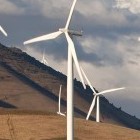 Wind is moving air. We can use the energy in wind to do work. Early Egyptians used the wind to sail ships on the Nile River. ...
Wind is moving air. We can use the energy in wind to do work. Early Egyptians used the wind to sail ships on the Nile River. ...
 Wind is moving air. We can use the energy in wind to do work. Early Egyptians used the wind to sail ships on the Nile River. ...
Wind is moving air. We can use the energy in wind to do work. Early Egyptians used the wind to sail ships on the Nile River. ...Wind Farm Siting, Installation and ...
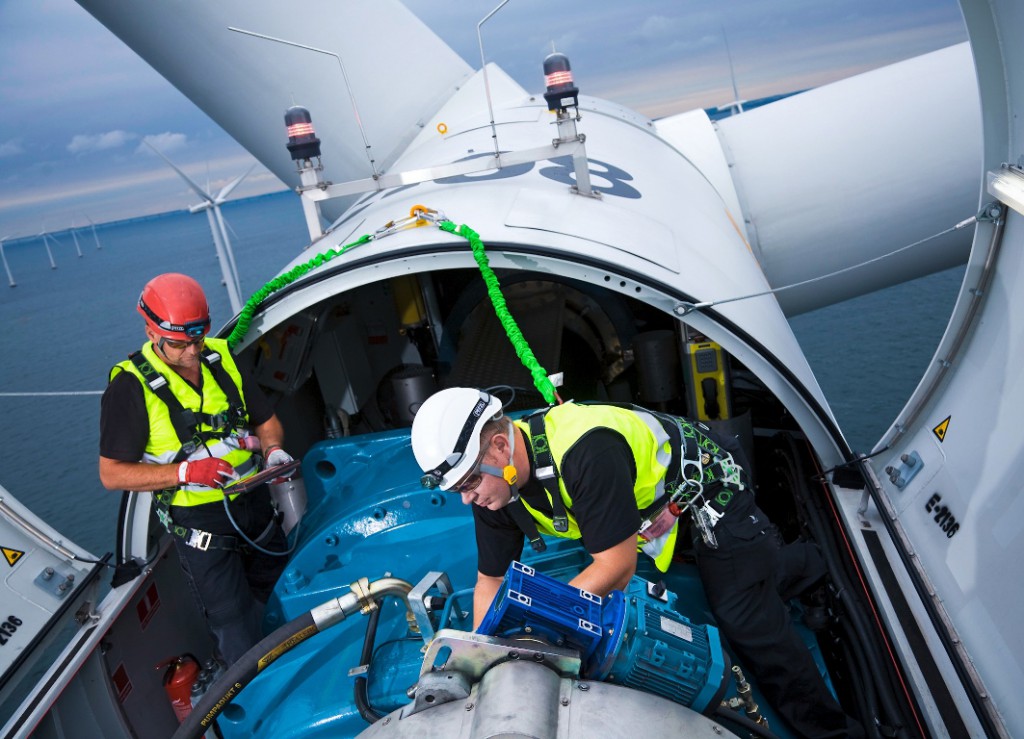 Before wind turbines can be installed, the most appropriate location or locations for them needs to be determined. The ...
Before wind turbines can be installed, the most appropriate location or locations for them needs to be determined. The ...
 Before wind turbines can be installed, the most appropriate location or locations for them needs to be determined. The ...
Before wind turbines can be installed, the most appropriate location or locations for them needs to be determined. The ...Basics of Wind Energy Production
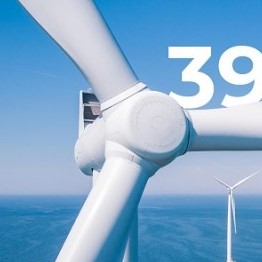 In the United States, most wind energy is commercially generated for delivery and sale on the grid. Wind projects vary in ...
In the United States, most wind energy is commercially generated for delivery and sale on the grid. Wind projects vary in ...
 In the United States, most wind energy is commercially generated for delivery and sale on the grid. Wind projects vary in ...
In the United States, most wind energy is commercially generated for delivery and sale on the grid. Wind projects vary in ...What is a Capacity Factor?
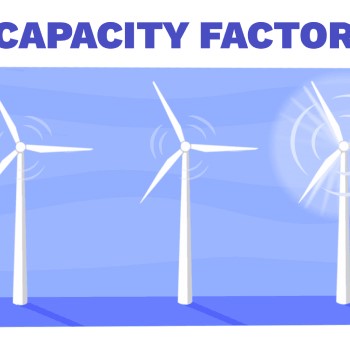 Wind turbines convert the kinetic energy in moving air into rotational energy, which in turn is converted to ...
Wind turbines convert the kinetic energy in moving air into rotational energy, which in turn is converted to ...
 Wind turbines convert the kinetic energy in moving air into rotational energy, which in turn is converted to ...
Wind turbines convert the kinetic energy in moving air into rotational energy, which in turn is converted to ...Basics of Wind Farms
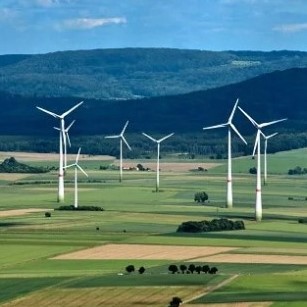 Throughout history, wind has been used to move grain mills or push the vessels that sailed the seas. However, it was not ...
Throughout history, wind has been used to move grain mills or push the vessels that sailed the seas. However, it was not ...
 Throughout history, wind has been used to move grain mills or push the vessels that sailed the seas. However, it was not ...
Throughout history, wind has been used to move grain mills or push the vessels that sailed the seas. However, it was not ...